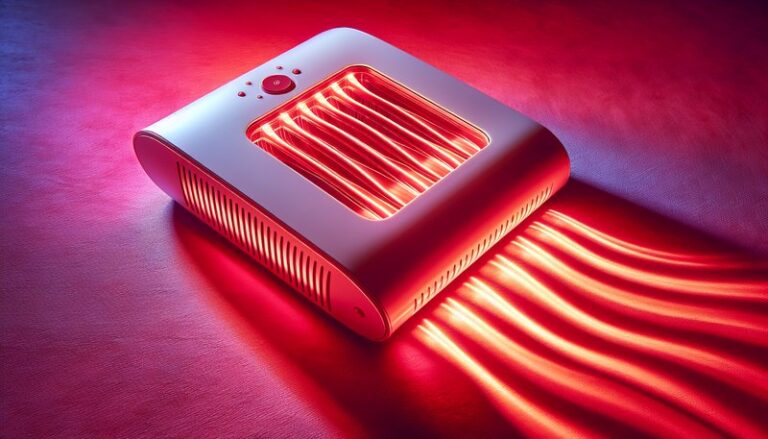How Often Can You Use Red Light Therapy For Pain?
How Often Can You Use Red Light Therapy For Pain?
Have you ever wondered if red light therapy could be a solution for alleviating pain? As natural pain management methods gain popularity, red light therapy has emerged as a promising option. This article will explore how often one can safely use red light therapy for pain relief, its benefits, alternatives, and considerations for effective treatment.
Key Takeaways
- Red light therapy can be used several times a week for pain relief, but individual responses may vary.
- Consistency is vital; it’s often recommended to undergo treatments regularly for the best results.
- Always consult with a healthcare professional before beginning any new therapy regimen, especially regarding proper timing and frequency.
What is Red Light Therapy?
Red light therapy (RLT) involves exposing the body to low levels of red or near-infrared light. This non-invasive treatment aims to reduce inflammation, promote healing, and alleviate pain. By stimulating cellular processes, particularly in mitochondria, RLT encourages ATP production, which is essential for energy and healing in cells.
This therapy is used in various conditions, from muscle strains and joint pain to chronic issues like arthritis and fibromyalgia. Understanding its mechanisms aids in utilizing it effectively and safely.
What are the Benefits of Red Light Therapy?
Red light therapy offers multiple advantages that make it appealing not only for pain relief but also for overall health improvement.
Pain Relief
Numerous studies have shown that red light therapy can effectively reduce pain levels. For example, patients with arthritis often report decreased pain after regular treatment sessions.
Reduced Inflammation
RLT has anti-inflammatory properties that can soothe swelling and decrease discomfort, providing a dual benefit for those suffering from conditions like tendinitis.
Improved Recovery Time
Athletes and individuals with injuries find that red light therapy speeds up recovery, helping them return to their activities more quickly.
Enhanced Mood and Well-Being
Some users experience an improvement in mood symptoms, particularly related to chronic pain, due to the therapy’s positive effects on metabolism and cellular function.
Is it Possible to Use Red Light Therapy Frequently?
Yes, it is possible to use red light therapy frequently, but the ideal frequency will depend on individual circumstances, such as the type of pain and the person’s health condition. Generally, users can safely benefit from sessions ranging from three to five times a week.
What are the Advantages of Frequent Use?
Frequent sessions can enhance overall effectiveness. Regular use may lead to cumulative benefits, making it more potent over time.
What are the Disadvantages of Frequent Use?
While generally safe, some may experience skin irritation or temporary redness when overexposed. Thus, moderation is key, and adhering to guidelines is advisable.
What are the Things to Consider Before Using Red Light Therapy Frequently?
Before incorporating RLT into your routine, consider several important factors to maximize benefits and minimize risks.
Uncover the facts in “Can Red Light Therapy Aid Cancer?”
Sensitivity of Your Skin
Individuals with sensitive skin may need to adjust the frequency or intensity of exposure to avoid adverse reactions.
Type of Pain or Condition
Different conditions may respond differently. Consult with a healthcare provider to tailor your regimen according to your specific pain management needs.
Overall Health
Existing health conditions or medications may affect how you respond to red light therapy. Always check with a healthcare professional to ensure it’s suitable for you.
What are the Alternatives to Red Light Therapy for Pain Relief?
If red light therapy isn’t suitable for you, or if you’re seeking other options, several alternatives provide effective pain relief.
Read our discussion on “Red Light Therapy for Rosacea?”
Cold Laser Therapy
Similar to red light therapy, cold laser therapy employs low-level lasers to reduce pain and inflammation without heat.
Transcutaneous Electrical Nerve Stimulation (TENS)
TENS uses electrical impulses to relieve pain by disrupting the pain signal sent to the brain, providing a quick alternative that can be done at home.
Physical Therapy
Personalized physical therapy focuses on physical exercises which strengthen muscles, improve mobility, and reduce pain through professional guidance.
Conclusion: Is it Recommended to Use Red Light Therapy Frequently?
In conclusion, red light therapy can be an effective and safe option for pain management when used with the correct frequency. Typically, treatments ranging from three to five times a week yield the best results, depending on individual needs. As with any therapy, it is essential to consider personal health conditions, consult with professionals, and listen to your body’s responses.
Frequently Asked Questions
How long does a red light therapy session typically last?
A typical session lasts between 10 to 20 minutes, depending on the area being treated and the device used.
Can red light therapy be used with other treatments?
Yes, red light therapy can often be safely used alongside other pain management treatments, but always discuss with a healthcare professional to ensure compatibility.
Are there any side effects of red light therapy?
While generally considered safe, some individuals report mild skin irritation or temporary redness. It’s essential to start with shorter sessions and monitor your body’s response.
Is red light therapy effective for all types of pain?
Red light therapy shows promise for various types of pain, particularly chronic pain and conditions like arthritis, but effectiveness may vary by individual and condition. Consultation is recommended to discuss expectations.
How quickly can I expect results from red light therapy?
Results can vary, with some individuals noticing changes within a few sessions while others may require longer to experience significant benefits. Consistency is crucial for effectiveness.






